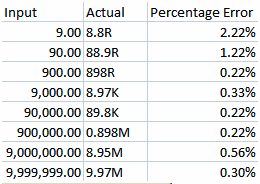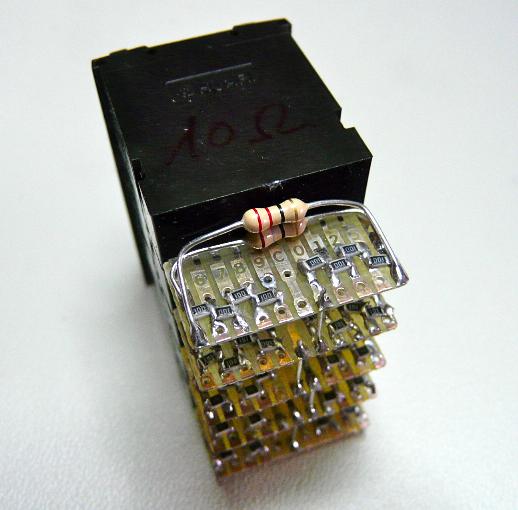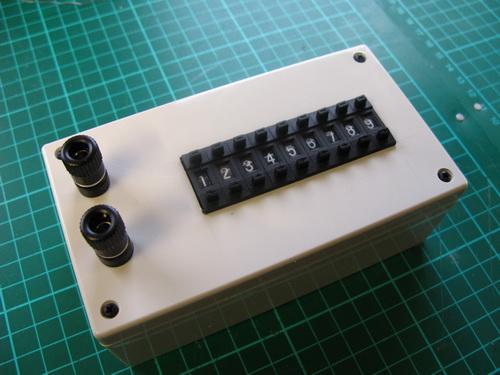 | ||||
HOME | ESR Meters | LCR Meters | Continuity-Low Ohm Meter |Geiger Counters | Tektronix | Metal Detectors | Contact Projects | Other Lab Tools | Solar | Master-Slave Switch | Semiconductor | ||||
 | |

Low Cost Resistor Decade (original here)
from user "vtl" on eevblog
After seeing these adjustable resistor substitution boxes I decided that they would be a nice addition to any person fiddling with electronics regularly. I don't particularly like potentiometers for this purpose as you usually have to have a pretty decent quality one otherwise it can be hard to dial in a precise resistance. After looking on the interwebs, it became clear that these things are quite expensive, usually utilizing expensive rotary switches. We're talking on the order of $50-$200 for what really is just a resistors hooked up to some switches. Surely there's a cheaper way? I saw these thumbwheel switches on eBay for a reasonable price, just $5 for 10. These can be stacked and locked together, with the numbers ranging from 0-9. The clips aren't particularly strong so glue may be needed to keep them together.
Design
Looking at the spacing it seems like it could be ideal for 0603 resistors. I decided not to go this route for now, I had a look at element14 and when you take into account minimum order quantities, the costs can rise pretty quickly when buying precision resistors. The biggest challenge to a resistor box is making it accurate. The box just puts the resistors in series to make up the value so the error of the resistors can add up pretty quickly and give you pretty wild deviation from what number you dial in. Now accuracy was not a large factor for me, as long as it was somewhat correct that would be fine for me. I wanted a box that would do 1R, 10R, 100R, 1K, 10K, 100K and 1M. Even if I had got 0.05% resistors, at 100k this could produce an error of 50ohms, quite large considering this device is supposed to do 1R steps. Clearly the larger resistors require a very good tolerance or you'll end up with large offsets from the value entered. So I concluded that this box would not be intended on being a precision instrument. It would be just a nice thing to have for circuits that require irregular resistances and I could just hook it up to a multimeter if I needed more accuracy. It would be similar to a pot but with a huge range and very fine and precise adjustment. On eBay they sell resistor kits pretty cheaply. A while ago I bought 2000 1% assorted resistors for $11 which is quite nice. I decided the accuracy would be terrible no matter what tolerance I use so I figured 1% should be good enough for hobby usage. These thumbwheel switches are much more compact than those huge resistor decade boxes I've seen. Instead of making up some kind of housing, the resistors should fit directly on the PCB and should not increase the overall size at all. The wiring is fairly simple but it may not be immediately apparent when looking at the switch. You have a common pin and 10 other pins corresponding to each digit. For a 10M (9,999,999R), 7 digit box this will require 63 resistors, with 9 resistors per digit.
This is a simplified drawing of the switch with only 6 contacts drawn. You would measure the resistance between the common and pin 0. In this case the wiper is switched to 3 so the measurement would be 3xR. You can daisy chain these up to provide more resistance, just attach the common to pin 0 of the next decade.
And here is the end result. It can be quite time consuming I guess if you work fast you can do 1 switch every 10-15 minutes or so. Its probably a good idea to check each switch before combining them up, I ended up gettign a few soldering errors and reworking it when its all glued and soldered together can be a bit tricky.
Accuracy
The accuracy will depend greatly on what value is shown on screen. If you use only 1 resistor from each decade then this will be highly accurate, but if you use many resistors then the error will add up. So I've tested by setting each range to 9 and recording the reading. REL was used when the resistor box was set to 0 to null out the resistance of the test leads
The percentage error looks quite bad at the lower resistances but the actual absolute values are quite small. We're talking less than 1.5ohms at the errors of greater than 1%. While probably not lab grade equipment I'm pretty pleased with the accuracy results. In general, when dialling in high values you tend to need to trim it out slightly. For this device, most of the time the device will give a value less than the desired value. I suppose it is possible to improve the device by adding some trimmers for each decade and might be handy if you're just building up a 1K box.
Overall cost estimate:
The parts cost is pretty cheap for this: $5.45 for 10 thumbwheel switches $.0055*63= $0.35 for 63 1% resistors Prices in AUD So surely this beats the hell out of those crazy expensive rotary switch boxes in terms of price and portability. So go out and build your own, I'd be interested to see what kind of error if 0.05% or better resistors were used.






a nice finished box from user Ian Johnston (IanJ) (original here)
my decade box under construction with 0805 resistors

another nice box from George Graves (original tutorial here)